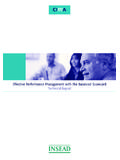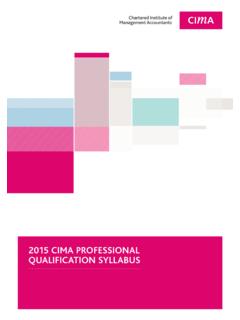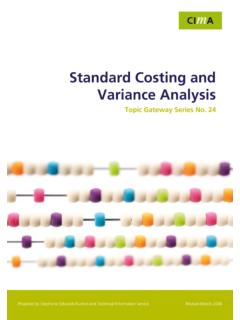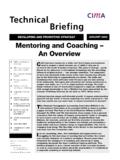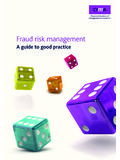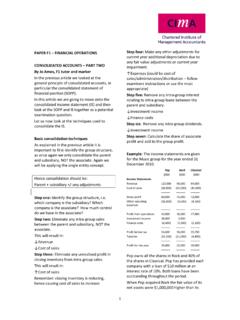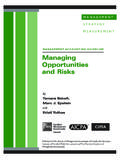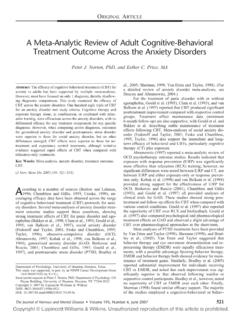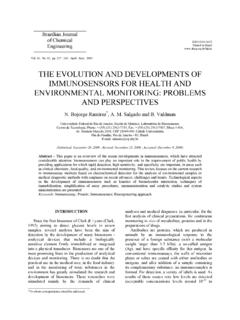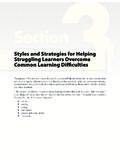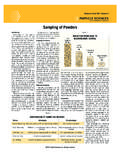Transcription of 04 - CIMA - Chartered Institute of Management …
1 04 04. The full syllabus Management level The full syllabus Management level 04 The full syllabus Management level continued B A B. A A. C B C. E C D. D. PAPER P2 Syllabus structure Assessment strategy PERFORMANCE Management There will be a written examination paper of three hours, plus The syllabus comprises the following topics and study weightings: 20 minutes of pre-examination question paper reading time. The Syllabus overview examination paper will have the following sections: While Paper P2 continues the analytic theme of Paper P1 A Pricing and 30%. Product Decisions Performance Operations (for example in terms of identifying relevant costs), its main focus is on the application of information A B CostB Planning and Analysis 30% A BSection A 50 marks in the Management processes of decision-making and control, so for Competitive Advantage B A C may be given, to which some or all questions relate. Five compulsory medium answer questions, each worth ten marks.
2 Short scenarios as to optimise performance. The first two sections deal respectively C. with the key contributors to operational performance revenue E C Budgeting and 20% D E Section B 50 marks (decisions of what to produce, at what price) and costs (how to manage them to maximise profitability). The role of control in DManagement Control C D. One or two compulsory questions. Short scenarios may be given, to which questions relate. monitoring and improving performance then comes to the fore in the final two sections, dealing with principles and practices in the D Control and Performance 20%. use of responsibility centres and budgeting. Measurement of Responsibility Centres A B A A. B B. D. C C C. P2 A. PRICING AND PRODUCT DECISIONS (30%). Learning outcomes Indicative syllabus content On completion of their studies students should be able to: Lead Component 1. discuss concepts of cost and (a) discuss the principles of decision-making including the identification of relevant cash Relevant cash flows and their use in short-term decisions, typically concerning acceptance/rejection of contracts, revenue relevant to pricing and flows and their use alongside non-quantifiable factors in making rounded judgements; pricing and cost/benefit comparisons.
3 Product decisions. (b) discuss the possible conflicts between cost accounting for profit reporting and stock The importance of strategic, intangible and non-financial judgements in decision-making. valuation and information required for decision-making; Relevant costs and revenues in decision-making and their relation to accounting concepts. (c) discuss the particular issues that arise in pricing decisions and the conflict between Marginal and full cost recovery as bases for pricing decisions in the short and long-term. marginal cost' principles and the need for full recovery of all costs incurred. 38 For more information visit For more information visit 39. 04 04. The full syllabus Management level The full syllabus Management level P2 A. PRICING AND PRODUCT DECISIONS (30%) continued Learning outcomes Indicative syllabus content On completion of their studies students should be able to: Lead Component 2. analyse short-term pricing and (a) explain the usefulness of dividing costs into variable and fixed Simple product mix analysis in situations where there are limitations on product/service demand and one other production constraint.
4 Product decisions. components in the context of short-term decision making; Multi-product break-even analysis, including break-even and profit/volume charts, contribution/sales ratio, margin of safety etc. (b) interpret variable/fixed cost analysis in multiple product Linear programming for more complex situations involving multiple constraints. Solution by graphical methods of two variable problems, contexts to break-even analysis and product mix decision making, together with understanding of the mechanics of simplex solution, shadow prices etc. (Note: questions requiring the full application of the including circumstances where there are multiple constraints and simplex algorithm will not be set although candidates should be able to formulate an initial tableau, interpret a final simplex tableau and linear programming methods are needed to identify optimal' solutions; apply the information it contained in a final tableau).
5 (c) discuss the meaning of optimal' solutions and how linear Sensitivity analysis of CVP-based decision models. programming methods can be employed for profit maximising, revenue maximising and satisfying objectives;. (d) analyse the impact of uncertainty and risk on decision models based on CVP analysis. 3. discuss pricing strategies and (a) apply an approach to pricing based on profit maximisation in imperfect markets; Pricing decisions for profit maximising in imperfect markets. (Note: tabular methods of solution are acceptable). their consequences. (b) discuss the financial consequences of alternative pricing strategies; Pricing strategies and the financial consequences of market skimming, premium pricing, penetration pricing, loss leaders, product (c) explain why joint costs must be allocated to final products for financial reporting bundling/optional extras and product differentiation to appeal to different market segments.
6 Purposes, but why this is unhelpful when decisions concerning process The allocation of joint costs and decisions concerning process and product viability based on relevant costs and revenues. and product viability have to be taken. P2 B. COST PLANNING AND ANALYSIS FOR COMPETITIVE ADVANTAGE (30%). Learning outcomes Indicative syllabus content On completion of their studies students should be able to: Lead Component 1. evaluate techniques for analysing (a) compare and contrast value analysis and functional cost analysis; Value analysis and quality function deployment. and managing costs for (b) evaluate the impacts of just-in-time production, the theory of constraints The benefits of just-in-time production, total quality Management and theory of constraints and the implications of these competitive advantage and total quality Management on efficiency, inventory and cost; methods for decision-making in the new manufacturing environment'.
7 (c) explain the concepts of continuous improvement and Kaizen costing that Kaizen costing, continuous improvement and cost of quality reporting. are central to total quality Management ; Learning curves and their use in predicting product/service costs, including derivation of the learning rate and the learning index. (d) prepare cost of quality reports; Activity-based Management in the analysis of overhead and its use in improving the efficiency of repetitive overhead activities. (e) apply learning curves to estimate time and cost for new products and services; Target costing. (f) apply the techniques of activity-based Management in identifying cost drivers/activities; Life cycle costing and implications for marketing strategies. (g) explain how process re-engineering can be used to eliminate non-value The value chain and supply chain Management , including the trend to outsource manufacturing operations to transition adding activities and reduce activity costs; and developing economies.
8 (h) explain how target costs can be derived from target prices and the Gain sharing arrangements in situations where, because of the size of the project, a limited number of contractors or security relationship between target costs and standard costs; issues ( in defence work), normal competitive pressures do not apply. (i) discuss the concept of life cycle costing and how life cycle costs interact The use of direct and activity-based cost methods in tracing costs to cost objects', such as customers or distribution channels, with marketing strategies at each stage of the life cycle. and the comparison of such costs with appropriate revenues to establish tiered' contribution levels, as in the (j) discuss the concept of the value chain and the Management of activity-based cost hierarchy. contribution/profit generated throughout the chain; Pareto analysis. (k) discuss gain sharing arrangements whereby contractors and customers benefit if contract targets for cost, delivery etc.
9 Are beaten;. (l) analyse direct customer profitability and extend this analysis to distribution channel profitability through the application of activity-based costing ideas;. (m) apply Pareto analysis as a convenient technique for identifying key elements of data and in presenting the results of other analyses, such as activity-based profitability calculations. 40 For more information visit For more information visit 41. 04 04. The full syllabus Management level The full syllabus Management level P2 C. BUDGETING AND Management CONTROL (20%). Learning outcomes Indicative syllabus content On completion of their studies students should be able to: Lead Component 1. explain the principles that underlie (a) explain the concepts of feedback and feed-forward control and Control system concepts. the use of budgets in control. their application in the use of budgets for planning and control; The use of budgets in planning: rolling budgets' for adaptive planning.
10 (b) explain the concept of responsibility accounting and its importance in the Responsibility accounting and the use of budgets for control: controllable costs and; treatment of uncontrollable costs;. construction of functional budgets that support the overall master budget; the conceptual link between standard costing and budget flexing. (c) identify controllable and uncontrollable costs in the context of responsibility accounting and why uncontrollable costs may or may not be allocated to responsibility centres. 2. evaluate performance using budgets, (a) evaluate projected performance using ratio analysis; Assessing the financial consequences of projected performance through key metrics including profitability, recognising alternative approaches (b) evaluate the consequences of what if scenarios and liquidity and asset turnover ratios. and sensitivity to variable factors. their impact on the master budget; What-if analysis based on alternate projections of volumes, prices and cost structures and the use of spreadsheets (c) evaluate performance using fixed and flexible budget reports.

